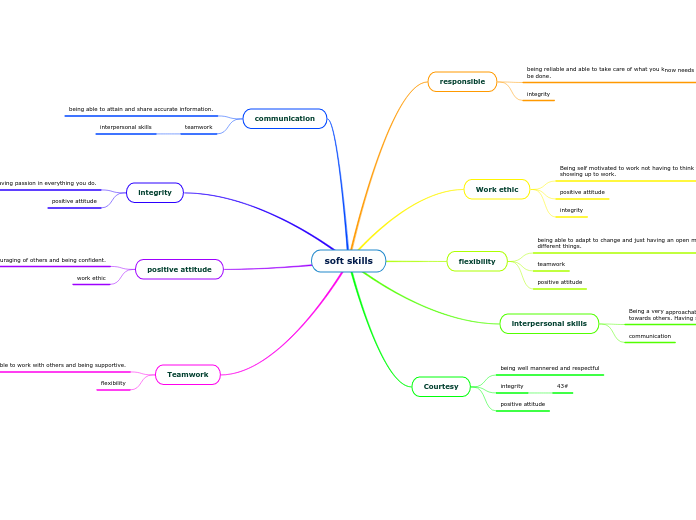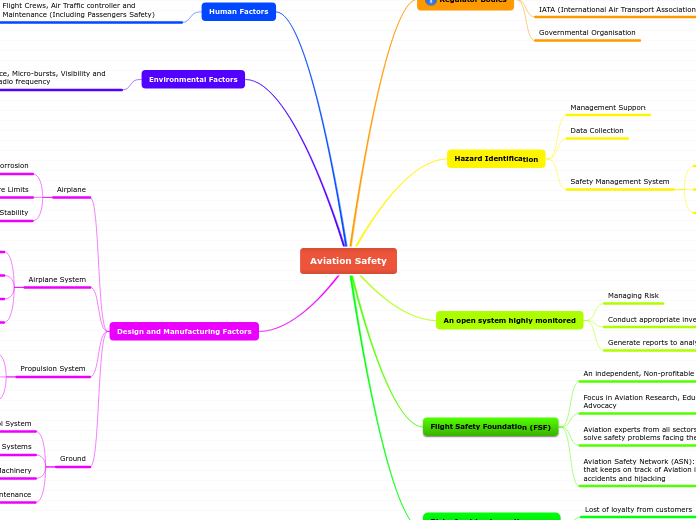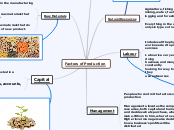Project Management
LU4) Feasibility Study
5) Cost-Benefit Analysis
Based on 3 Economic principles:
Willingness-to-pay test
example: airlines manage to charge a range of air fares for the same seat.
"simply to determine how much your clients are prepared to pay for your product."
Hicks-Kaldor test
Example: a Dam project may have many benefits to the community but it might cause silting up of the river.
"The aggregate gains should exceed aggregate losses."
Pareto Improvement Criteria
example: very difficult to achieve in reality
"The project should make some people better off without making anyone worse off."
Performed to establish the financial feasibility of a project.
4) Value Management
Points to be considered when carrying out VALUE ANALYSIS
6) OPTIMIZE RESOURCES
5) SAVE TIME, MONEY AND ENERGY
4) SIMPLIFY METHODS AND PROCEDURES
3) PROMOTE INNOVATION
2) GENERATE ALTERNATIVE IDEAS
1) IDENTIFY UNNECESSARY EXPENDITURE
3) Evaluate Constraints
3 Types
External Constraints
imposed by parties outside the company and the project's sphere of influence.
licenses, permits, etc
political unrest
climatic conditions
environmental issues
currency fluctuations
logistic constraints
unavailable resources
component lead times
laws and regulations
Internal Corporate Constraints
the company itself can impose further constraints on the project through their corporate strategy. These usually relate to long term issues.
exports
training
industrial relations
partner
Estimating
marketing
Financial objectives:
Internal Project constraints
relates directly to the scope of the project and asks basic questions about the product.
can the company accept time penalties?
can the project be completed within budget?
special transport requirements
special equiptment or machines required?
special design requests
can the employees be trained to the level of ability or should contractors be employed?
wait or start the project?
does the company have the technology?
can the product be made?
2) Identification of the Clients needs
Project requirements can be gathered through BRAINSTORMING, FOCUS GROUPS AND FACILITATED WORKSHOPS.
Project viability check
8) assess competition from other players in the market
7) assess the market supply and demand curve
6) define the target market
5) is the style that of current fashion?
4) optimum size of the end product
3) how the product will impact the environment
2) how the environment will impact the product
1) impact location has on project
A design philosophy should be made stating all decisions that are made regarding the clients needs. Certain objectives can not be achieved with other objectives and therefore a tradeoff needs to take place. All of these decisions should be clearly stated. This part of the process defines the scope of the project.
the starting point of a project is usually to address a problem, need or business opportunity.
1) Identifying a project stakeholder
Stakeholder Analysis includes:
level of interest of the stakeholder in the specific project
ability to affect the project policies through power and leadership
stakeholder characteristics
External stakeholders
media outlets
government agencies
special interest groups
trade unions
regulatory authorities
many types of stakeholders that should be identified when going into a project. Stakeholders are important to the project!
legal
rules and regulations both national and international that must be complied with.
suppliers and vendors
external companies or people who supply materials and equipment.
sub-contractors
the external companies or people offering specialist expertise to supplement the company's workforce.
colleagues
functional managers
who will be supplying the workforce for the project
senior management
project team
the team members who plan, organise, implement and control the work of sub-contractors to deliver the facility within the constraints of time, cost and quality.
customers
receive and pay for the benefit of the facility.
users
the people who will operate the facility when the project is completed.
sponsor
the person/company who authorises the expenditure on the project.
owner
the person who's strategic plan created the need for the project
originator
the person who suggested the project
Who is involved in the feasibility study?
*senior management appoints a project manager for the feasibiliy study.
*Project manager selects the feasibility study team.
*Operators have an input in the design of the project.
*There needs to be enough time to release members from their normal duties as well as do the feasibility study.
How do we formalise a feasibility study?
we add requirements, boundaries and expected outcomes!
1)who is responsible?
2)project brief to be analysed
3)who should be involved?
4)Level of detail
5)Budget for the feasibility study
6)Report back date.
once the feasibility study is done the senior management decides whether or not to go ahead with the project.
How does a feasibility study begin?
* ideas, needs and problems become projects
* Project feasibility study assesses the viability of the project.
*Formalise the project with the PROJECT CHARTER. This outlines the purpose of the project and what it is meant to achieve.
LU5) Project selection (basic summary)
What is the Time value of money principal?
money is expected to be worth less in the future due to 2 things:
2) the inability to invest the money
1) the impact of inflation
it suggests that money earned today is worth more than money expected in the future.
What are the advantages and disadvantages of IRR?
Disadvantages:
only uses one rate throughout the project
conflicting solutions if cashflows are not normal.
Advantages:
has the ability to compare alternative projects from the perspective of expected return on investment.
What is the internal rate of return?
a method of evaluating the expected outlays and income associated with new project investment opportunity.
what principal are all financial models predicted on?
Time value of money principal
what does a scoring criteria assign to the criteria used to evaluate a project?
weights
what is the simplest method of project screening and selection?
making a checklist
What are the 2 classes selection models come in?
non numeric
numeric
LU3) Project life cycle
The early stages of the project can best be described as:
answer: Low costs and low demand for resources.
What is a Project deliverable?
answer: The end result of a project planning session
What management skill is most used by the project manager?
answer: COMMUNICATION
Contract Types
5 Types
PFI
Private Finance Initiative
PPP
Private, Public Partnerships
ROT
Refurbish, Operate and Transfer
BOOT
Build, Own, Operate and Transfer
BOT
Built , Operate and Transfer
Product lifecycle phases
7 Phases
6) Decommission and Disposal
Final phase of product lifecycle.
disposing of facilities should have been considered in the design phase to have minimal impact on the environment.
5) Up-grade, Expansion Phase
facility requires an upgrade or expansion to keep it running efficiently and effectively.
factors which effect this phase as:
* new technology
*competition
*market requirements
*rules and regulations
it should be managed as a mini project.
There needs to be tight timelines to cause minimal disruptions.
4) Maintenance Phase
This phase is to keep the facility functioning.
minimum impact of maintenace on production must be considered in the design phase of the project.
3) Operation Phase
This is the entire purpose of the project.
outside of the project managers sphere of influence.
Project manager only interacts with the operations manager with regards to:
1) Handover
2) Maintenance
3) Upgrade and expansion
4)Disposal
2) Project Lifecycle Phase
1)concept and initiation phase
2)Design and Development phase
3)Construction or Implementation phase
4)Commissioning and Handover phase
1) Pre-Project Phase
new ideas, innovation,creativity
market research identifies market changes
responding to a new competitor product
expanding facilities to meet increased demand.
Front End Design and Development
project costs can be reduced, improved flexibility can be promoted and improved performance is highest in the early phases.
Project manager must be appointed early to ensure project is most effective.
Financial encouragement is to spend much more time and effort in teh initial phases to get the design right before implementation.
The cost of making changes or the design needing to be changed due to errors becomes more expensive as the project progresses through the phases.
The stakeholders potential to add value through the design reduces as the project progresses.
This phase is where the greatest potential to add value is.
1980's they realised that they should focus on the earlier stages of the cycle. The Design and Development Phase.
Explanation: in the 1960's & 1970's project management focused on implementation phase because it used the largest amount of effort and expenses.
projects are generally subdivided into phases to provide better management.
4 Phases
Phase 4: Commissioning and Handover Phase
Confirms the project has been implemented.
Built to the design specifications.
Concludes the project.
Phase 3: Implementation or Construction Phase
Implement the plan as set out in the baseline plan.
Phase 2: Design and Development Phase
use guidelines of the feasibility study to design the project.
Outline Build method
Develop plans for implimentation
Phase 1: Concept and initiation Phase
Establishing a need or opportunity
Look at feasibility
when a proposal is accepted, move onto next phase









